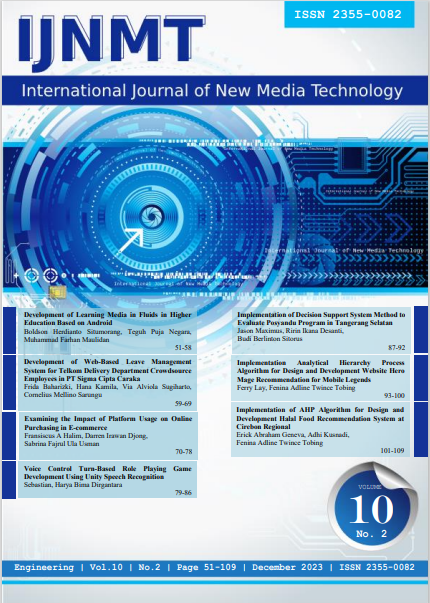Implementation of Decision Support System Method to Evaluate Posyandu Program In Tangerang Selatan
DOI:
https://doi.org/10.31937/ijnmt.v10i2.3451Abstract
The goal of this study is to develop a decision support system (DSS) using the Technique for Order Preference by Similarity to Solution (TOPSIS) and Simple Multi-Attribute Rating Technique (SMART) approaches to evaluate the Posyandu Program. The case study focuses on Posyandu in Tangerang Selatan Regional. The local government runs Posyandu, an Indonesian public health service facility for women and children. This DSS system uses the TOPSIS approach to employ the ranking function and select the best alternative based on agreed-upon criteria with the local Posyandu. This approach calculates the distance between each option with a positive ideal solution and a negative ideal solution and then computes the relative preference value, which determines how to rank. In addition, the SMART approach assigns weights to each predefined criterion. Using the TOPSIS and SMART approaches to implement DSS at Posyandu helps people make decisions by providing them with the best ranking results based on predefined criteria. Thus, it is believed that the findings of this study would improve the quality of Posyandu services and contribute to the overall health of the community.
Downloads
Additional Files
Published
How to Cite
Issue
Section
License
Authors retain copyright and grant the journal right of first publication with the work simultaneously licensed under a Creative Commons Attribution-ShareAlike International License (CC-BY-SA 4.0) that allows others to share the work with an acknowledgement of the work's authorship and initial publication in this journal.
Authors are able to enter into separate, additional contractual arrangements for the non-exclusive distribution of the journal's published version of the work (e.g., post it to an institutional repository or publish it in a book), with an acknowledgement of its initial publication in this journal.
Copyright without Restrictions
The journal allows the author(s) to hold the copyright without restrictions and will retain publishing rights without restrictions.
The submitted papers are assumed to contain no proprietary material unprotected by patent or patent application; responsibility for technical content and for protection of proprietary material rests solely with the author(s) and their organizations and is not the responsibility of the IJNMT or its Editorial Staff. The main (first/corresponding) author is responsible for ensuring that the article has been seen and approved by all the other authors. It is the responsibility of the author to obtain all necessary copyright release permissions for the use of any copyrighted materials in the manuscript prior to the submission.















